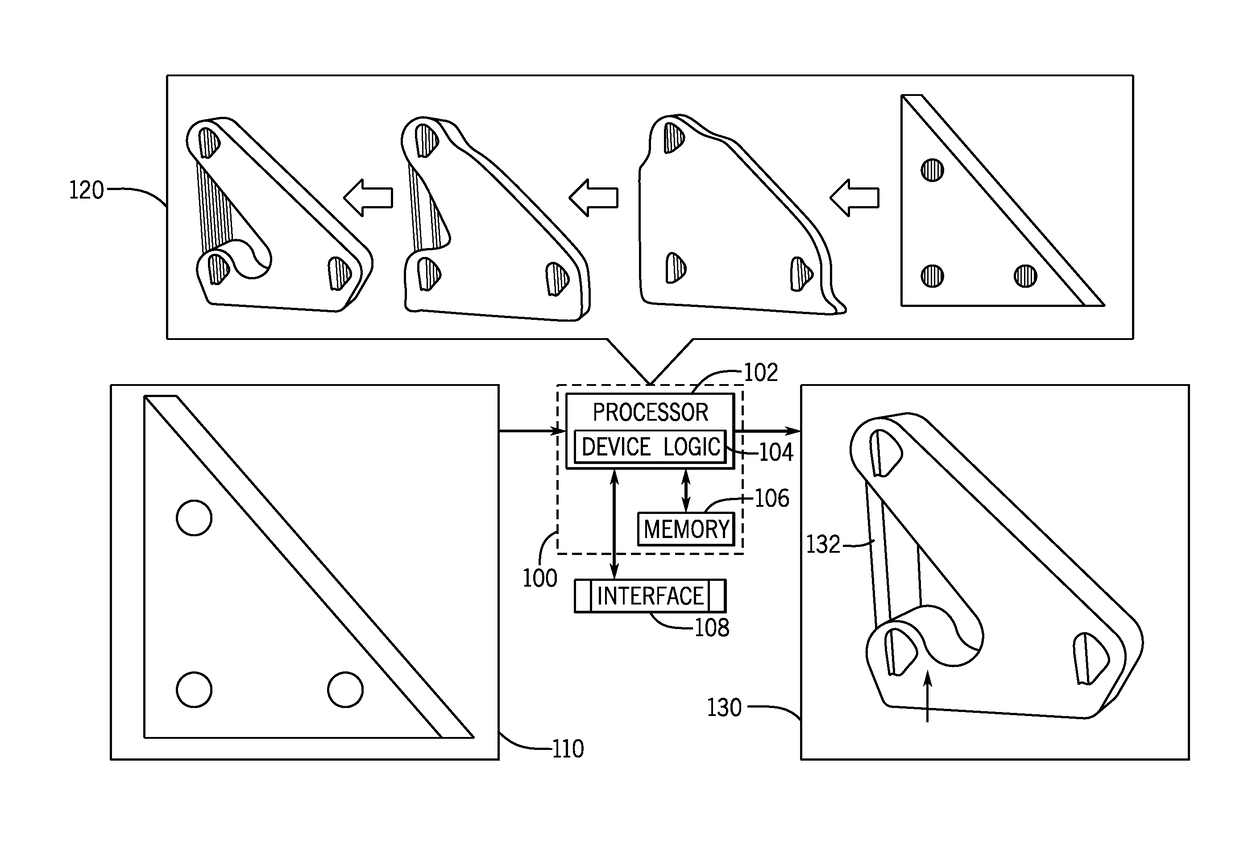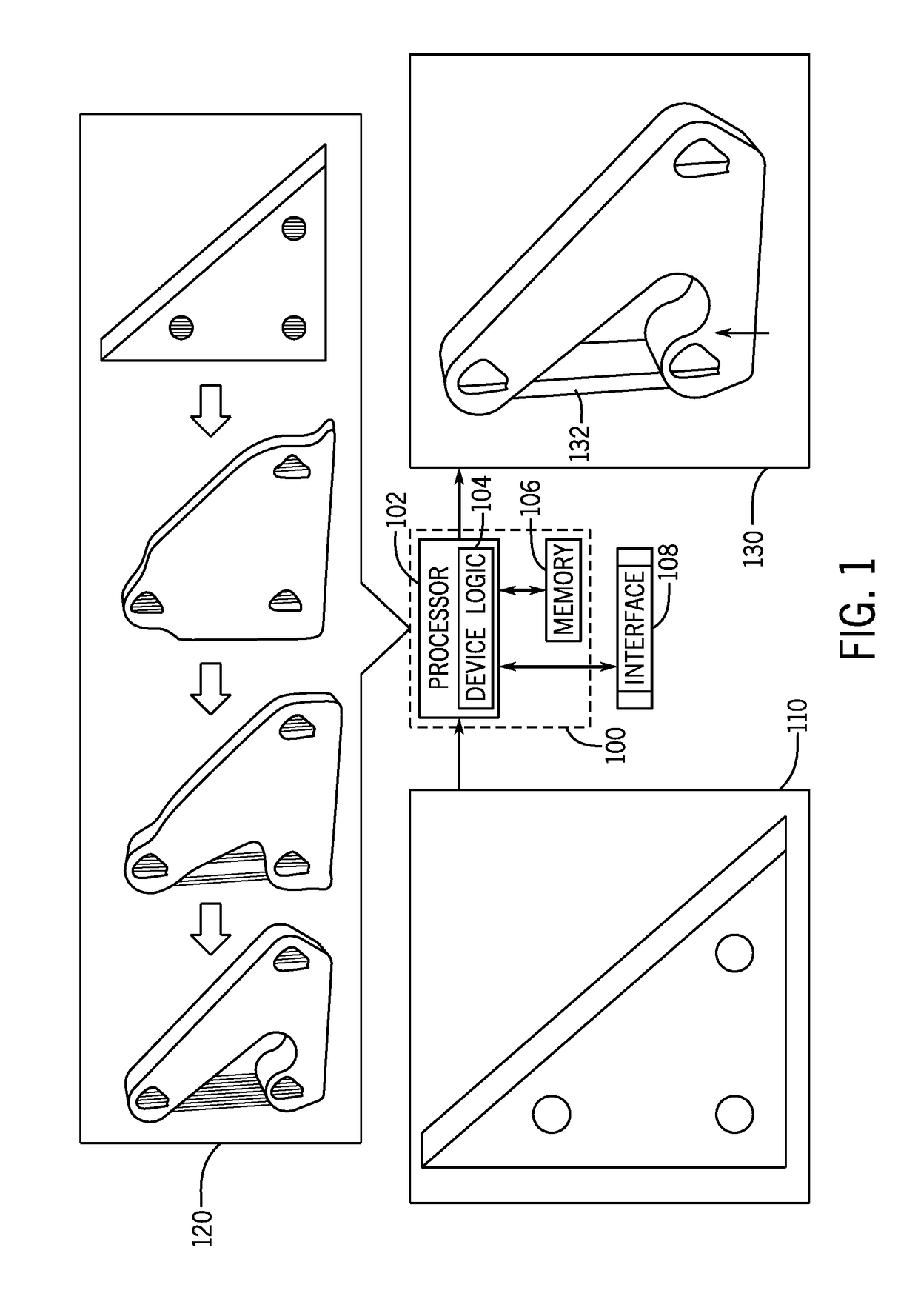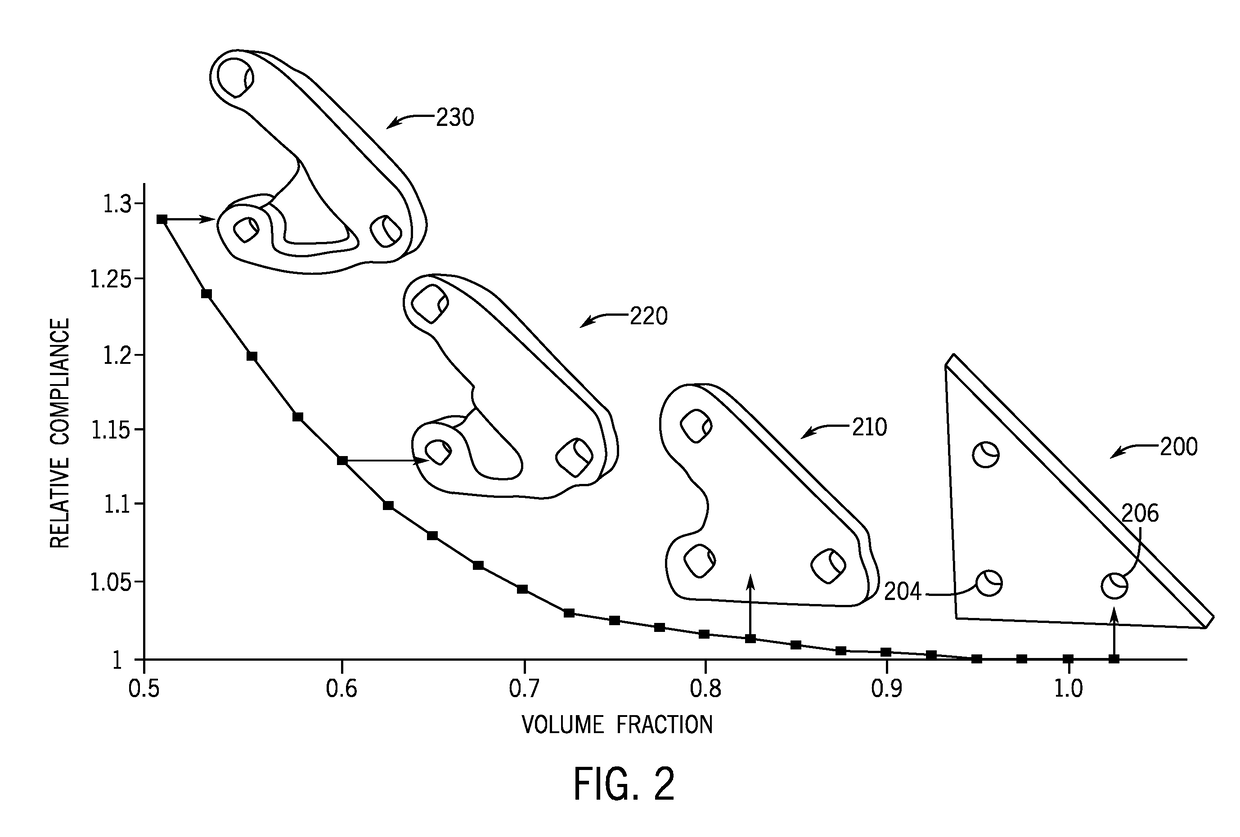Support structure constrained topology optimization for additive manufacturing
- Summary
- Abstract
- Description
- Claims
- Application Information
AI Technical Summary
Benefits of technology
Problems solved by technology
Method used
Image
Examples
numerical examples
[0082]Several examples are now described to demonstrate the proposed TO framework and optimization methods. In all of the examples, the material is assumed to be isotropic ABS plastic with Young's modulus of E=2 GPa and Poisson ratio of ν=0.39. The interior support sensitivity is included in all of the examples to achieve a smoother sensitivity field.
[0083]FIG. 10A illustrates an exemplary 2D Messerschmidt-Bölkow-Blohm (MBB) beam 1000, an object common to TO examples. The threshold angle is assumed to be 3π / 4. The initial design requires no support and the objective is to find the stiffest design at 0.65 volume fraction. FIG. 10B illustrates an unconstrained optimization 1010 performed without support volume constraints; the optimization 1010 presents a relative compliance of 1.29 (i.e., 129% of the initial MBB beam 1000), and its support volume is the baseline support volume against which the optimizations created by the present methods are compared.
[0084]FIGS. 10C-E illustrate opt...
PUM
| Property | Measurement | Unit |
|---|---|---|
| Angle | aaaaa | aaaaa |
| Volume | aaaaa | aaaaa |
| Sensitivity | aaaaa | aaaaa |
Abstract
Description
Claims
Application Information
 Login to View More
Login to View More - R&D
- Intellectual Property
- Life Sciences
- Materials
- Tech Scout
- Unparalleled Data Quality
- Higher Quality Content
- 60% Fewer Hallucinations
Browse by: Latest US Patents, China's latest patents, Technical Efficacy Thesaurus, Application Domain, Technology Topic, Popular Technical Reports.
© 2025 PatSnap. All rights reserved.Legal|Privacy policy|Modern Slavery Act Transparency Statement|Sitemap|About US| Contact US: help@patsnap.com



